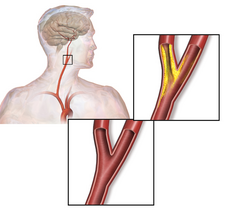Rehabilitation after Stroke is one of the most important phases in recovery after stroke. It is also one of the most neglected aspects of stroke care in India. Annual estimated stroke incidence is 135 to 145 per 100,000, with early death rates ranging from 27% to 41%. This corresponds to ~1.5 million people having a stroke each year, leading to a further 500,000 people, each year, living with stroke-related disability. Hence, every patient being treated for stroke should have access to rehabilitation services.
The long term goal of rehabilitation is to improve function so that the stroke survivor can become as independent as possible. This can be achieved by regaining the lost function as well as retraining other areas of the brain to take up the lost function (brain plasticity).
When does rehabilitation begin?
The long term goal of rehabilitation is to improve function so that the stroke survivor can become as independent as possible. This can be achieved by regaining the lost function as well as retraining other areas of the brain to take up the lost function (brain plasticity).
When does rehabilitation begin?
Rehabilitation should begin as soon as the treating doctor determines that the patient is medically stable. Depending upon the severity of stroke, rehabilitation may be undertaken in
- Rehabilitation unit in the hospital
- At home, through home health personnel
- Outpatient rehabilitation facilities
- Long term care facilities such as nursing home
What are the different components of rehabilitation after stroke?
- Psychological - Depression and anxiety are the most common sequelae after stroke. Timely consultation with a psychiatrist and a psychologist will prevent interference with recovery process.
- Cognitive retraining - The psychiatrist and psychologist can also help in improving communication, spatial awareness, concentration and memory.
- Physiotherapy helps in improving muscle strength and overcoming walking difficulties.
- Occupational therapy involves adapting your home or using equipment to make everyday activities easier, as well as trying to find alternative ways of carrying out tasks that the patients have problems with.
- Speech and Language therapist works with improving difficulties with speech and communication.
- Swallowing difficulty - Some patients may have difficulty swallowing and require a feeding tube to prevent aspiration of food into the lungs. In long term, the speech and language therapist also works with the patient in starting oral feeds in a way to prevent aspiration.
- visual problems such as not being able to see one half of the visual fields may require eye movement exercises and can be addressed by simple ways by the physiotherapist or the ophthalmologist.
- Bladder and bowel problems are not uncommon after stroke and can be effectively be treated with retraining exercises, medications, pelvic floor exercises and the use of special products for incontinence.
- Erectile dysfunction can be a problem after stroke and there are many ways to overcome it.
- Not being able to drive is another major problem that may prevent the stroke survivor from returning to work. It should be borne in mind that the patients should start driving only after obtaining clearance from the doctor. If needed, specific training should be sought.
- Changes should be made in the lifestyle to prevent further strokes.
The ATTEND (Family-Led Rehabilitation After Stroke In India) trial aims to determine whether stroke recovery at home given by a trained family member is an effective, affordable strategy for those with disabling stroke in India when compared to usual care. Considering the cultural and family structure in India, this trial if it is positive it holds promise for a major change in practice in stroke rehabilitation both in developed and developing countries.

